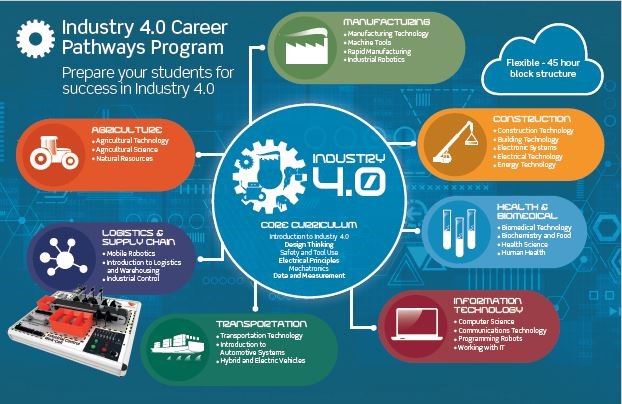
There have been many examples of engineering throughout history, ranging from ancient monuments all the way to modern technology. Ancient Egyptians, for example, credit Imhotep with building a step pyramid in Saqqara. Imhotep completed his step pyramid in the third century BC. His death was later celebrated by the Egyptians who deified him. This ancient Egyptian engineer may be familiar to you, but did know that he was also an Egyptian deified god.
Ancient engineering monuments
Many ancient engineering monuments are testaments to human talent. The ancient Egyptian civil engineers are reflected in the pyramids, ziggurats, and Pharos at Alexandria. Acropolis, the city of Indus Valley civilization, and other ancient engineering monuments are examples. The Colosseum and Acropolis are monuments left by Roman and Greek ancient engineers. The impressive structures built by Mayan civil engineers include the drainage systems and aqueducts at Teotihuacan (Mexico). Al-Jazari, a Turkish engineering monument, was built with five water pumps for the kings and queens of the Artuqid Dynasty. Other engineers, such as Mechanics created the concepts of gears and escapement mechanisms.
Early mechanical engineering
The origins of mechanical engineers date back to Mesopotamia's 5th-millennium BC. The field has expanded greatly over the years, encompassing everything from automobiles to energy conversion to microelectromechanical systems. It was not as easy as it is now, as shown by the history of mechanical engineering. Regardless of whether you are interested in automobiles, manufacturing equipment, or energy conversion, mechanical engineering has shaped many aspects of our lives.

Electric engineering was in its infancy
After World War I, it was difficult to maintain a good relationship between the government and electrical engineers. Radio was used during World War I to communicate with one another, but this new technology needed heavy government regulation. The United States government assumed control of all wireless channels in 1917. This was because the radio spectrum was so valuable that it could not be left uncontrolled. This led to a technological boom that transformed the way we communicate. Today you can see the history behind electricity in New York City.
Radio technology was in its infancy
Radios were initially used for simplex communications in the early 1900s. Morse Code was used to transmit messages. It is the same code that was used to write. These communications were only one-way and could not be heard over the other. Although radios were limited in their capabilities, the concept of sending electric waves over large distances was revolutionary. It would take a new technology to make long-distance telephone connections possible.
Early electric generators
The creation of an early electric generator was a remarkable feat of engineering. This made it possible produce small amounts of electricity with little effort. During the 1880s, hydraulic mines in the Sierra Nevada started experimenting with hydroelectric power. Almarian Decker, an engineer from the Brush Arc Light Company, who had recently moved to California with tuberculosis and was now a transmission engineer, integrated generation into the first three phase alternate-current power station in Redlands.
Early electrical engineering in western Europe
The 19th-century is the start of the history in electrical engineering. Alexander Graham Bell (and Thomas Edison) were the two most influential people in the sector at this time. Electricity spread rapidly and these two men became the first engineers to specialize in this field. The rise of the electrical industry changed the world and government became a large employer of electrical engineers. While the TVA was the most famous of government initiatives in this area, local governments also provided service and power.

Santa Clara's early days of electrical engineering
The School of Engineering at Santa Clara University was founded in 1912, and started offering bachelor's degrees. Later, the school offered master's degrees and doctoral programs. Today, the school serves the entire Silicon Valley area. It offers a variety of programs in electric engineering, including advanced degree programs. It offers many opportunities for continuing education and networking. It is the sole national professional organization that focuses on electrical engineering.
The beginning of electrical engineering in England
Electrical engineering was born in England. Many of these pioneers, including George Stephenson as well as Isambard Kingdom Brunel (and Thomas Telford), were from the UK. In 1821 Michael Faraday showed the first conversion of electrical energy to mechanical energy. This proved the foundation of the field. These pioneers were not the only ones who contributed to the field's growth.
The United States' early days of electrical engineering
Electricity is not a new technology. However, many other jurisdictions saw it as a necessity. In order to provide power and communication for their citizens, governments began to assume this responsibility and were major employers in electrical engineers. Although the TVA is perhaps most well-known government initiative in this field, there were many others. Government control over power and communications was the norm in the USA. Electrical engineers realized the importance of developing their field with technological advances.
FAQ
Is engineering a rewarding career?
Engineering is an exciting career where you can learn new things and keep improving your skills. It is possible to make a significant impact on people's lives. You have many options to make a difference in people's lives.
You could design products, such as cars and planes, trains, computer systems, smartphones, and other devices. These devices could also be built or software developed by you. Perhaps you could create medical equipment. There are endless possibilities!
Engineers also love working with people to solve problems and come up with solutions. They are always looking for new challenges and opportunities to learn.
Engineering is a great career choice. But it requires hard work and dedication. It's not just sitting around watching TV all day. To achieve the desired results, you will need to work hard. But the rewards will be worth it.
What kind of jobs can I get if I study engineering?
Engineers can find work in almost all industries, including manufacturing and transportation.
Engineers who specialize in particular fields can often find employment at specific companies or organizations.
As an example, engineers might work for telecommunications providers, medical device producers, or computer chip companies.
Software developers can work as website or mobile app developers.
Computer programmers could work for tech companies like Google or Microsoft, Apple, Amazon or Facebook.
What are industrial engineers doing in their day?
Industrial engineers focus on how things operate, interact and function.
Their job ensures that machinery, plants, and factories run efficiently and safely.
They design equipment, controls, operations, and other tools to make it more convenient for workers to do their jobs.
They also ensure that machines conform to safety standards and environmental regulations.
Statistics
- 2021 median salary:$95,300 Typical required education: Bachelor's degree in mechanical engineering Job growth outlook through 2030: 7% Mechanical engineers design, build and develop mechanical and thermal sensing devices, such as engines, tools, and machines. (snhu.edu)
- 8% Civil engineers solve infrastructure problems. (snhu.edu)
External Links
How To
How to Use an Engineering Ruler
Engineers use the engineering ruler to measure distances. Engineers have been measuring distances since ancient times. Around 3000 BC, the world's first measured device was developed.
Modern rulers are still used, although they have undergone significant changes. The most widely used type of ruler is the metric ruler. These rulers can be marked in millimeters (0.039 inches) Metric rulers are usually rectangular in shape and come in many sizes. Some rulers also include centimeters, millimeters, and graduations. For example, 1 cm equals 2.54 mm.
Engineers won't be using traditional mechanical rulers today. They would prefer a digital version that measures millimeters. It functions in the same way as a regular digital scale but has markings that correspond to different length units. Learn more about them here.